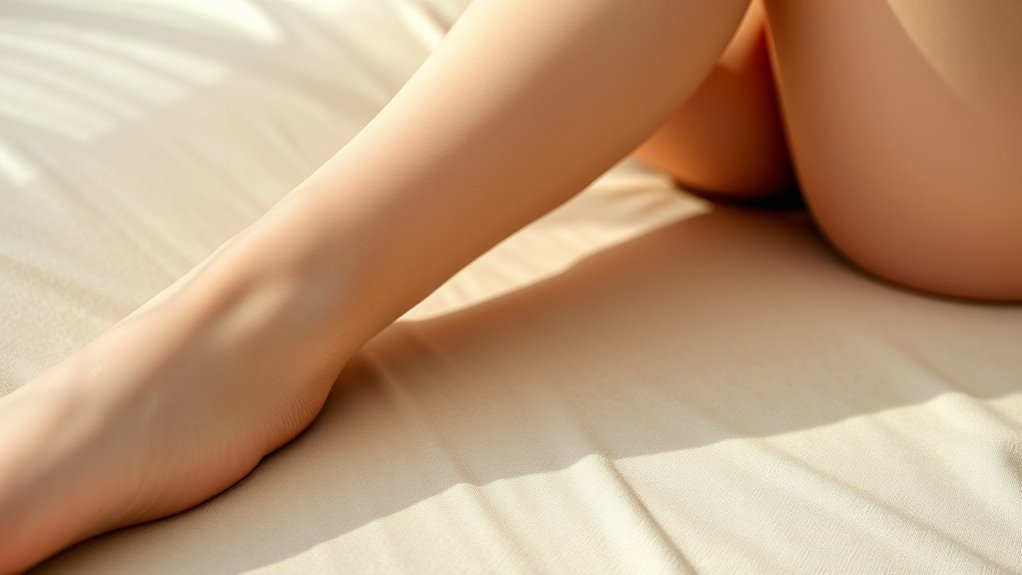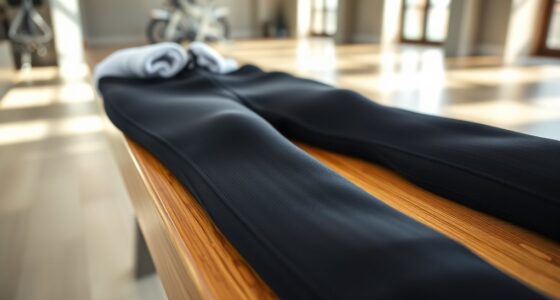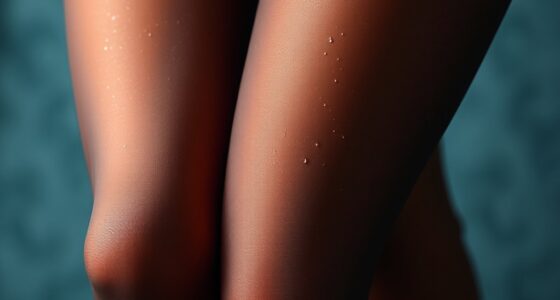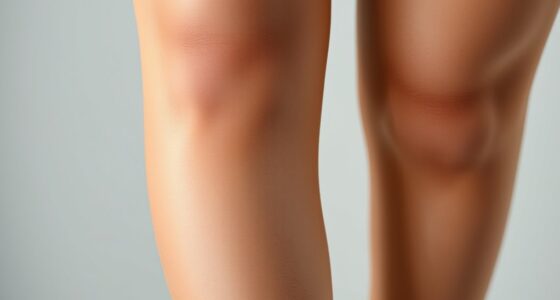Wearing pantyhose doesn’t cause varicose veins; in fact, they can sometimes help support circulation if fitted properly. Most factors that lead to varicose veins, like genetics, age, pregnancy, and lifestyle choices, have a much bigger impact. Tight clothing or poorly fitted pantyhose might restrict blood flow temporarily, but they aren’t the main cause. If you want to understand how to protect your leg health, keep exploring these important facts.
Key Takeaways
- Scientific studies show no evidence that pantyhose cause varicose veins.
- Properly fitted pantyhose with appropriate compression can support circulation and vein health.
- Tight clothing, including poorly fitted pantyhose, may temporarily restrict blood flow but doesn’t cause long-term damage.
- Genetics, age, and pregnancy are primary risk factors for varicose veins, not pantyhose.
- Comfortable, correctly sized pantyhose can even help improve blood flow and reduce leg discomfort.
Understanding Varicose Veins: Causes and Risk Factors
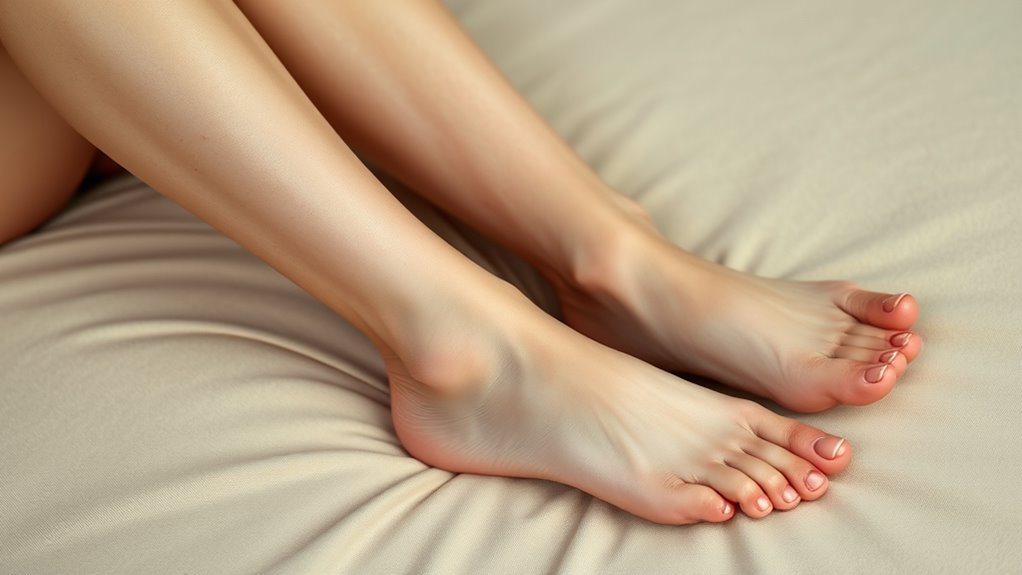
Varicose veins develop when the valves in your veins become weak or damaged, causing blood to pool and veins to enlarge. Historically, misconceptions linked varicose veins solely to poor circulation or lack of activity, but modern research shows genetics, age, and pregnancy are more influential risk factors. Celebrity influences have also shaped perceptions, with some stars showcasing prominent veins and fostering myths that certain fashion choices, like tight clothing, directly cause varicose veins. However, these beliefs oversimplify the condition’s causes. Understanding that weakened valves and underlying risk factors are the primary culprits helps you see beyond outdated ideas. Recognizing the real causes can guide better prevention and treatment strategies, rather than blaming external factors or following misconceptions influenced by popular culture. Additionally, aquatic exercise can be beneficial for improving circulation and reducing symptoms associated with varicose veins.
The Role of Compression in Leg Health
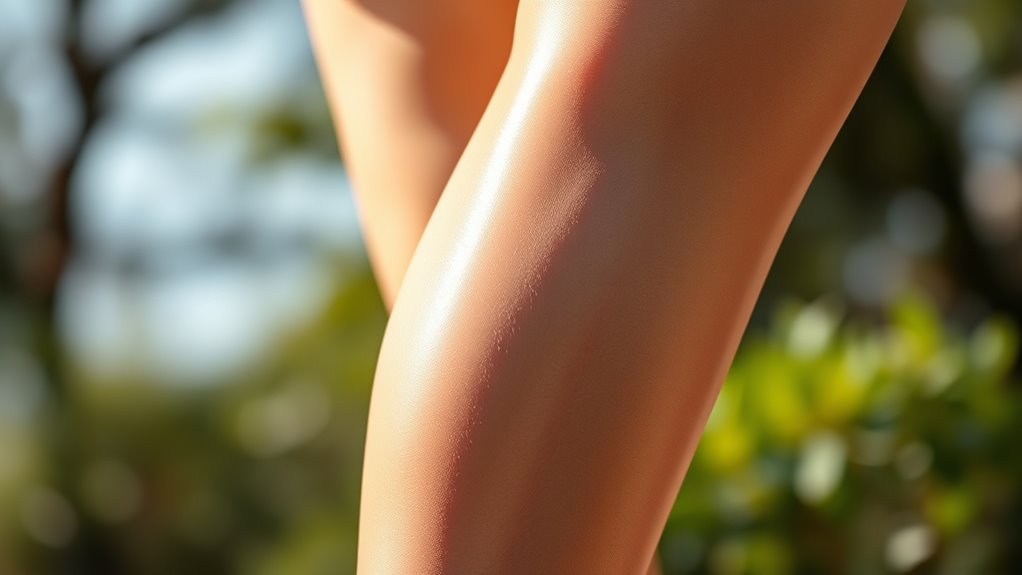
Compression therapy plays an essential role in supporting leg health by applying gentle pressure that helps improve blood circulation and reduce vein swelling. When you wear compression garments, they gently squeeze your legs, encouraging blood to flow upward toward your heart. This increased blood circulation can prevent blood from pooling in your veins, which is a common cause of varicose veins. Proper compression also alleviates discomfort, heaviness, and swelling, especially after long periods of standing or sitting. By promoting healthy blood flow, compression therapy helps maintain vein strength and flexibility. It’s a safe, non-invasive way to support your circulatory system and reduce the risk of developing vein-related issues. Incorporating compression into your routine can make a significant difference in leg comfort and overall vascular health. Additionally, understanding the effects of juice cleansing on overall wellness can help you make informed choices for your health.
Scientific Evidence on Pantyhose and Vein Health
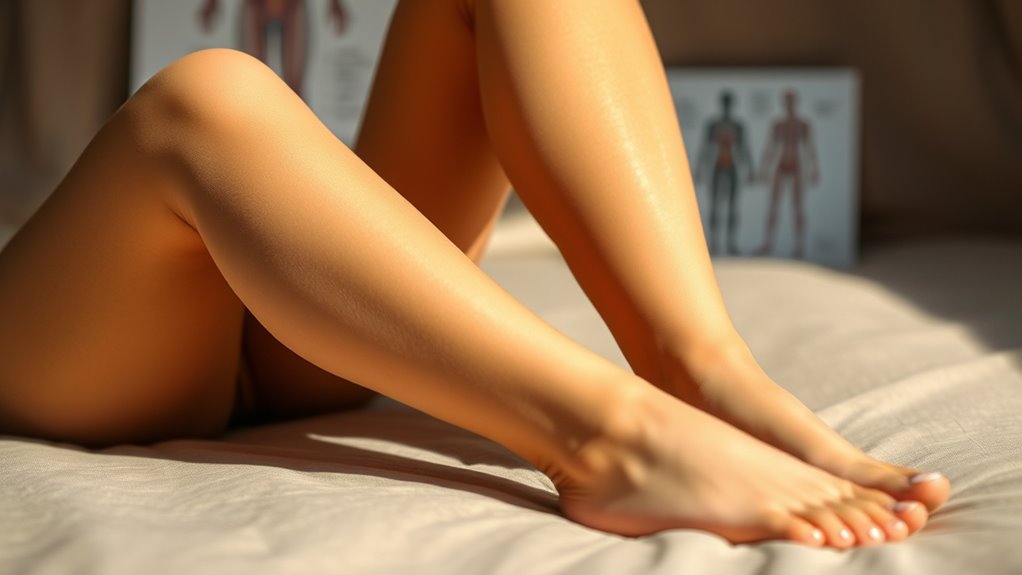
Research on pantyhose and their impact on vein health presents a mixed picture. Many believe they cause varicose veins, but scientific studies don’t support this. Instead, some evidence suggests that tight clothing, including poorly fitted pantyhose, can temporarily restrict blood flow, but it doesn’t lead to long-term vein damage. This misconception often stems from fashion misconceptions and cosmetic concerns, where women worry about appearance or discomfort. However, most research indicates that wearing pantyhose in moderation, especially those with proper compression levels, can actually support circulation. It is also important to consider how compression levels influence blood flow and vein health. It’s essential to differentiate between myths and facts, as the scientific community generally finds that pantyhose do not cause varicose veins. Instead, factors like genetics and lifestyle play a more significant role.
Proper Use of Pantyhose to Support Circulation
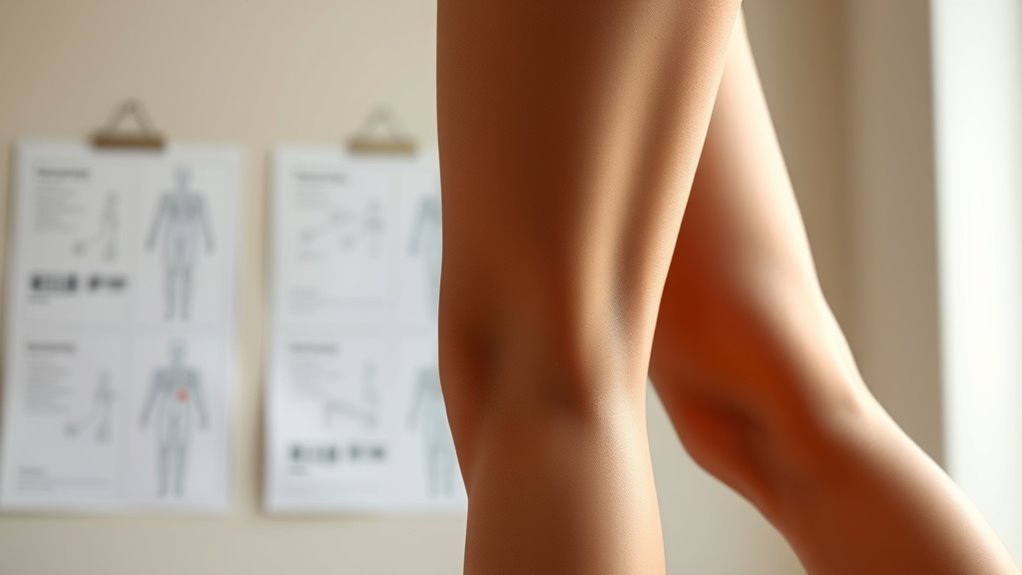
To support healthy circulation when wearing pantyhose, it’s important to choose the right fit and compression level. Properly fitted pantyhose prevent pinching and constriction, encouraging better blood flow. Opt for high-quality material choices like nylon blends or spandex, which offer durability and breathability. Remember, pantyhose can be fashion statements, so select styles that match your wardrobe while supporting your veins. Ensuring the correct compression level can also help reduce the risk of developing varicose veins over time.
Tips for Preventing Varicose Veins Beyond Hosiery
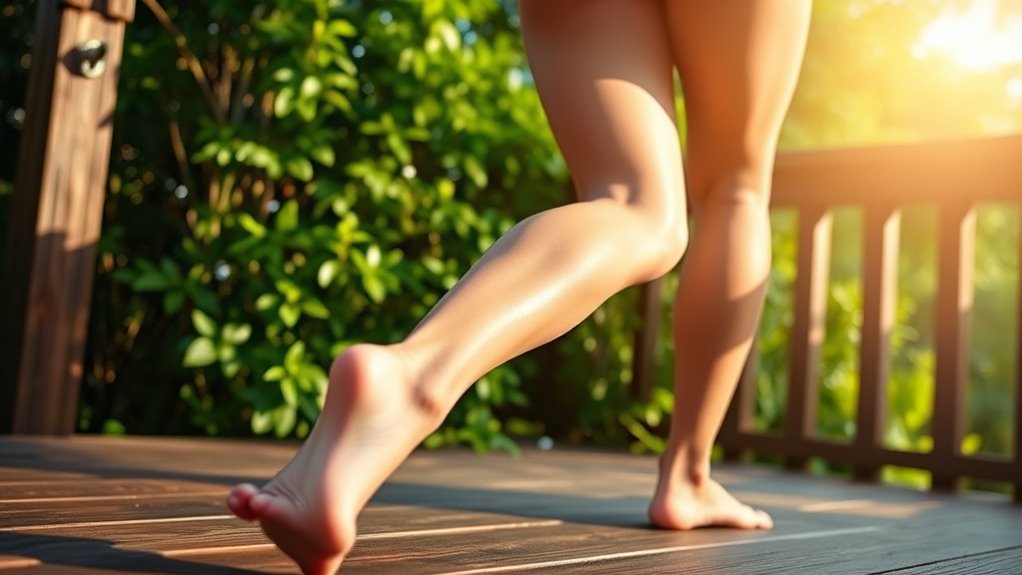
While choosing the right pantyhose can improve circulation, adopting other habits can further reduce your risk of developing varicose veins. Your fashion choices matter—opt for comfortable, supportive footwear and avoid tight clothing that restricts blood flow. Incorporating healthy lifestyle habits is equally important; stay active with regular exercise like walking or swimming to strengthen leg muscles and improve circulation. Maintain a healthy weight to lessen pressure on your veins, and elevate your legs when resting to promote blood return. Avoid prolonged standing or sitting, taking breaks to move around. Staying hydrated and eating a fiber-rich diet can also prevent constipation, which puts extra pressure on veins. Additionally, understanding angel numbers can inspire you to make positive changes in your health routines. Staying consistent with these habits creates a holistic approach to preventing varicose veins.
Frequently Asked Questions
Can Wearing Pantyhose Improve Existing Varicose Veins?
Wearing pantyhose can help improve existing varicose veins by providing compression therapy, which supports your veins and enhances circulation. This compression helps reduce swelling and discomfort, making your legs feel better. While pantyhose aren’t a cure, they can be an effective part of managing symptoms. If you have varicose veins, consult a healthcare professional to determine if compression stockings are right for you and guarantee proper fit and compression level.
Are There Specific Types of Pantyhose Better for Leg Health?
Isn’t it time to choose pantyhose that work for your legs, not against them? Opt for those made with compression fabrics, which gently support your veins and improve circulation. Look for breathable materials that keep your legs cool and comfortable all day. These types of pantyhose can reduce discomfort and promote leg health, making them a smart choice for maintaining your circulatory system’s wellbeing.
How Long Can I Safely Wear Pantyhose Each Day?
You can typically wear pantyhose safely for about 8 hours a day, but listen to your body. If you notice skin irritation or discomfort, remove them and allow your skin to breathe. For added leg health, consider compression therapy pantyhose, which provide gentle pressure without restricting circulation. Avoid prolonged wear if you experience swelling or pain, and consult a healthcare professional if you have concerns or persistent issues.
Do Pantyhose Affect Blood Circulation Differently During Exercise?
You might think pantyhose during exercise are just for style, but ironically, they can actually help. The compression benefits of pantyhose promote better blood flow, reducing swelling and fatigue. During exercise, they support circulation, preventing blood from pooling and enhancing recovery. So, yes, pantyhose influence blood circulation positively, making your workout more comfortable—who knew tight hosiery could be so helpful in boosting your blood flow?
Are There Alternative Treatments for Preventing Varicose Veins?
If you want to prevent varicose veins, consider alternatives like compression therapy, which applies gentle pressure to improve blood flow, and regular leg elevation to reduce vein swelling. Staying active, maintaining a healthy weight, and avoiding prolonged sitting or standing also help. These strategies can be effective alongside medical advice, offering you options beyond just wearing pantyhose, especially if you’re concerned about circulation or vein health.
Conclusion
Don’t believe the myth that pantyhose cause varicose veins. In fact, wearing properly fitted compression hosiery can improve circulation and reduce discomfort. Studies show that up to 50% of adults will develop varicose veins at some point, but you can lower your risk with healthy habits and correct support. So, next time you wear pantyhose, know you’re helping your leg health rather than harming it. Stay active and take care of your veins!
